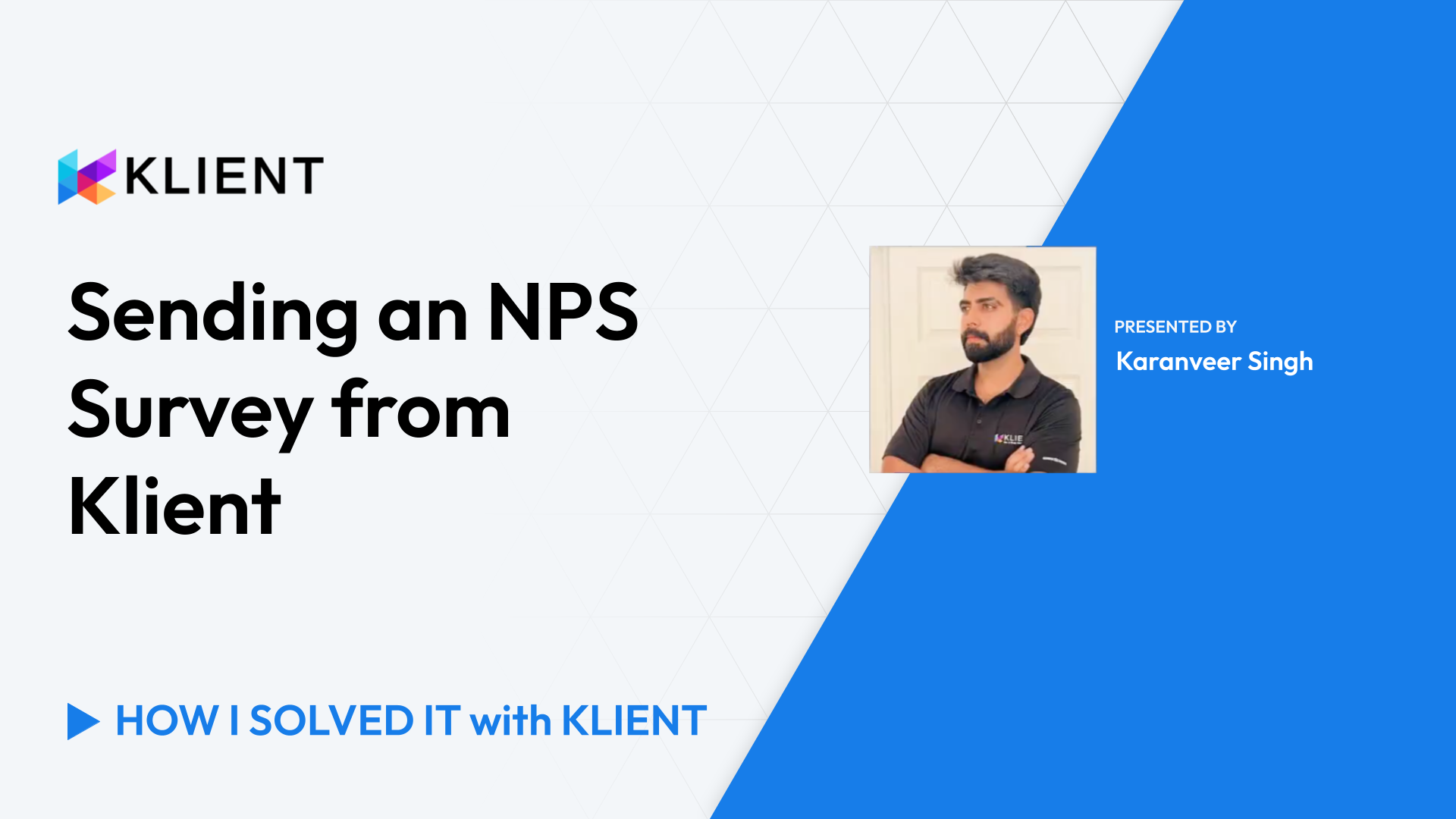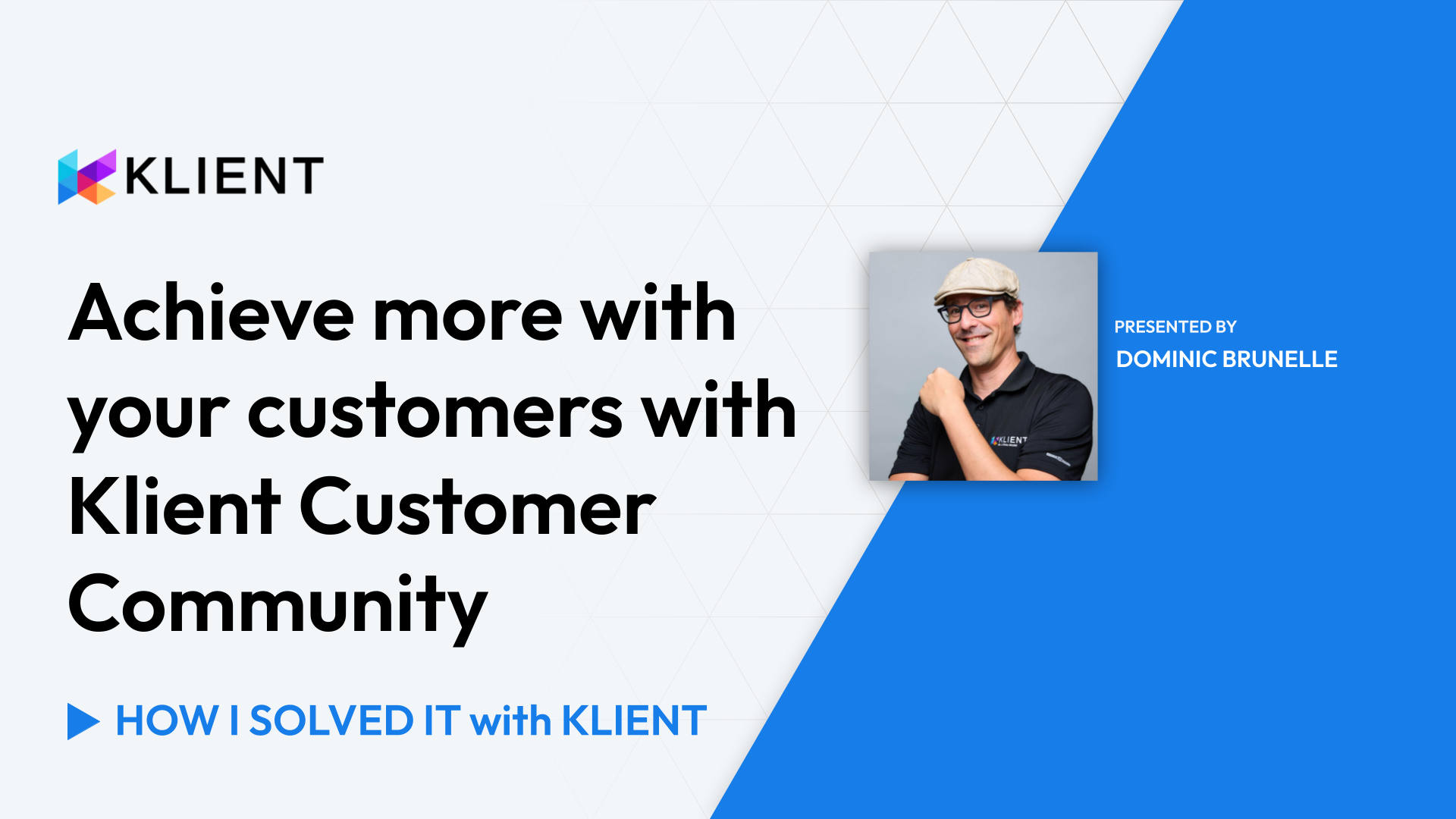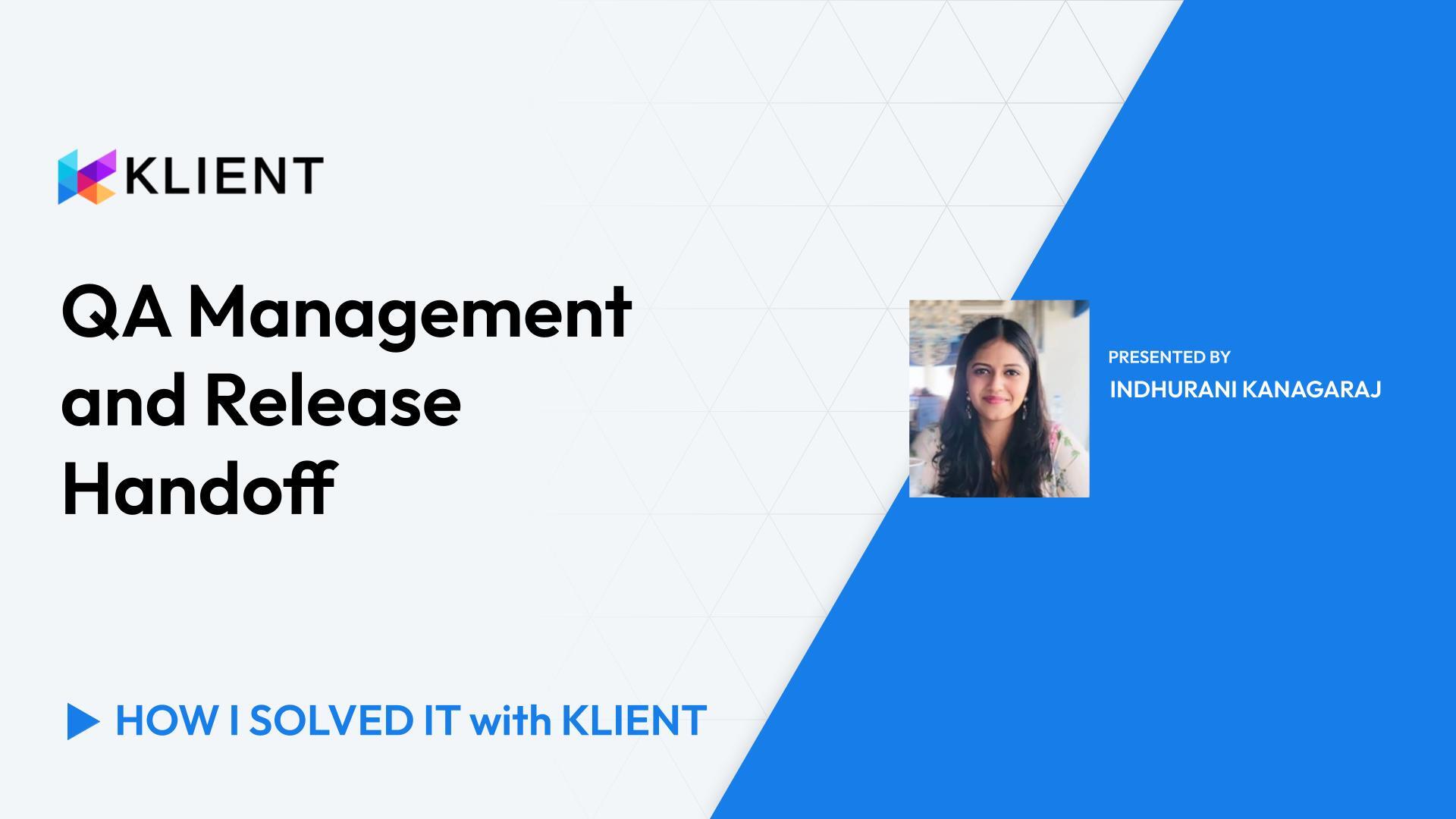Add Value to Project Closure Using Survey
Challenges in Project Closure
Importance of Project Closure
Best Practices for Project Closure
Using Checklists for Project Closure
Analyzing and Using Survey Results
1. Introduction (0:00 – 0:13)
Hello everyone. Dominic for another ‘How I Solved It With Klient’, talking about how we can add value to a project closure using surveys amongst other things.
2. Challenges in Project Closure (0:14 – 0:35)
Challenges we’re all facing here: getting better at what we do. As I always say, life is a project, but how can we prevent repeating the same mistakes over and over? How can we do in the context of a project for implementation? How can we do a better transition planning to the rest of the team that will need to interact with our customer after. Recording and reporting customer feedback.
3. Importance of Project Closure (0:36 – 0:55)
How can we do that within the context of one system or our project so that we can have better visibility on that. Making the project closure as an added value activity. How can we convey to the rest of the team that this step is key for us to get better?
4. Best Practices for Project Closure (0:56 – 1:30)
So, two best practices here, there could be a longer list but focusing on those two. First is to make project closure part of your delivery recipe. So it needs to be there so that we build that habit and then getting the feedback from the customer, but especially take action on that and on the results that you’re getting from those probings.
5. Incorporating Project Closure in Templates (1:31 – 1:50)
So first thing is that it needs to be part of your recipe, it needs to be part of your project templates. When you spin a new project for an engagement with a customer, the project closure step should be there so that we have visibility on that, we can foresee it, we can plan it, and we can make sure that we have visibility as a team on those steps.
6. Using Checklists for Project Closure (1:51 – 2:20)
So making it as a milestone most likely on our project, makes a lot of sense so that you can include it as a task as part of your project template, have some key information descriptions, maybe guidance of what you’re expecting to be done and how we want to do that as a business, when we’re doing that project closure, so key information here on the task that can be brought over when we’re spinning that new template.
7. Sending Surveys from Project Context (2:21 – 3:00)
The checklist is also quite interesting because the checklist is really “don’t forget to do this” so there’s a certain list here connecting and sending the survey, sharing the lessons learned through a Slack channel maybe, so just providing guidance to your team of what you’re expecting to make this project closure process complete. As they are going through those steps, they’ll be able to mark complete and we’ll have an assessment of what was done in this stage here.
8. Analyzing and Using Survey Results (3:01 – 3:30)
A bit more on the send project closure, an interesting aspect here is that sending the project right from the project context, makes it quite interesting. It is a step, it’s something that will be within your system so you can easily select here ‘Send survey’ right from your project that you’re completing, which is going to use the contact information from the account of that project. You can simply select who were the contacts within that engagement you completed, sending them through a pre-built survey, it’s an email survey that they will receive and then selecting which survey that you might have.
9. Leveraging Survey Feedback for Improvement (3:31 – 4:00)
Based on context, in this case here the post go live, but selecting the right survey that they will receive that and the result, as you’ll see, will be back right into contacts in that project. The customer, as we’re sending that will receive an email from using your template where they can directly into an email take action and start filling that survey. So a combination of NPS, CSAT, star-style type of questions, open topic questions… We also have multi checklists and radio button, so all possibilities here to build a detailed survey, with whatever information that you feel are required to complete that.
10. Conclusion (4:01 – 4:30)
Submitting the response, the customer will send the information back into our project. So right in context, we will have information available to see the responses. Maybe with some high level information reports here, and dashboard report components right on our record to show NPS results, maybe or having a full detailed list of all answers per customer that we can see right from our project. Providing visibility to the team on that feedback that you’re getting from the customer will be key for the business to improve. And then feedback that knowledge within your templates to keep on improving your delivery methodology and procedure and documentation. That’s gonna be very important to get better, but leveraging that information also will be key. Thanks! If there’s any questions, it’s always a pleasure. Reach out to us and we can continue the discussion.

Found this helpful?
Here are some similar videos in our serie How I Solved It with Klient
Subscribe to our channel
Visit and subscribe to our channel for more insights on leveraging Klient to solve your business challenges.










